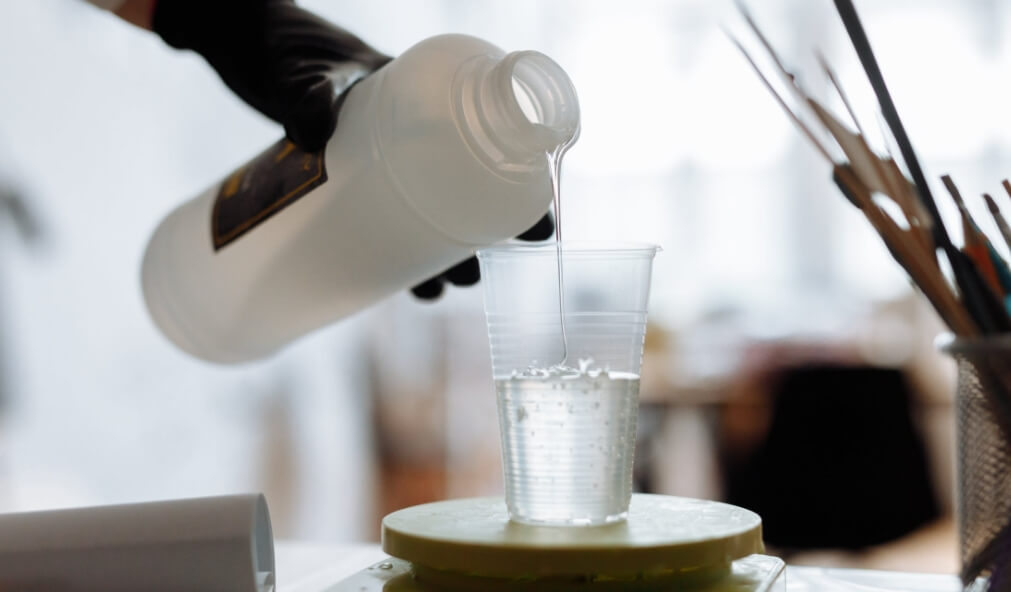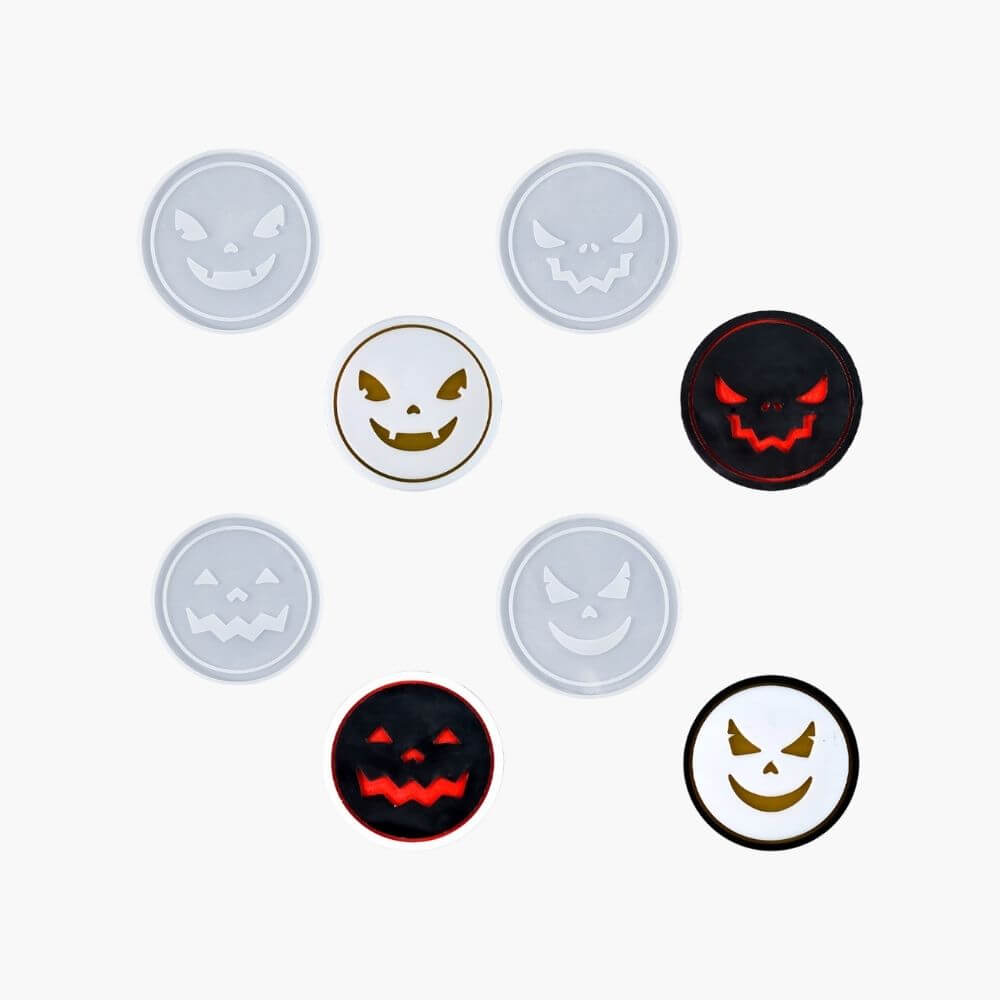Are you still trying to get your head around mixing resin? There’s certainly an art to it, and I’m here to share with you some reliable and helpful tips for making your resin mix as smoothly as possible. Figuratively and literally, of course!
Who am I, right? Don’t worry, I’m an experienced resin artist with 8 years of fine-tuning beneath my belt to help you enjoy some compilation-free resin work that is going to be as fun as you’ve always imagined.
Sure, you can struggle through figuring it all out the hard way, but why not give this list a read to see if there’s anything here that can help you enjoy the resin process a bit more? After all, the right approach to its tricks and tips can help you get to those more complex pieces faster, right?
Ready to have the right support to help you a little or a lot? Here’s what you’re about to learn about:
- Have the right safety equipment ready to go
- Make sure you’re using the right resin
- Figure out your resin needs
- The resin mix ratio dilemma
- Are you mixing resin by volume or by weight?
- Get the right temperature
- Avoid water like the plague
- Add hardener and stir
By learning how to approach each step and tip with the right facts and support, you’ll be able to reduce wastage in boht supplies as well as time. You’ll also know how to properly keep yourself safe, too, which is not something to be taken lightly!
Have the right safety equipment ready to go
Safety always comes first when working with resin. You’ll need safety gear as well as a work surface that is free from anything other than your resin project. As far as the gear is concerned, you’ll want to have:
- Safety glasses
- A work shirt with sleeve and/or long-sleeved apron
- A filtering mask
- Nitrile disposable gloves
You’ll also want to make sure that you are working in a safe, ventilated environment with no food, drink, pets or children that may cause any problem while you work. Make sure that all of this is ready to go before you go any further!
Make sure you’re using the right resin
Next on your to do list for the best resin tips is to make sure that, well, you’re using the right resin. Each kind of resin is different from the other kids, and you may find that certain projects prefer or recommend a particular kind of resin. When you’ve got resin and hardener, match them with brands as much as possible for the best results.
Can you ignore those instructions and just focus on the concept of using whatever you already have to prevent you from having to buy more? Sure! But, it may not turn out how you hoped and it’ll take a lot of time and effort! Is that really how you want to start your resin mixing adventure? Quick tip: you can search for projects that use the resin you have already!
Figure out your resin needs
In this case, I’m talking about the actual physical amount of resin that you want to use. In order to prevent wasting or, worse, running out of resin as you pour it into the resin mold, this requires careful research. Most project plans will give you an approximate amount for this reason! If not, go a quick search online or experiment as accurately as you can!
Don’t under-guess. If you aren’t sure, budget a bit more than you think you need and have another tiny resin mold close by so that you can use it and keep from wasting it!
The resin mix ratio dilemma
This is the “nuts and bolts” of it, fellow resin artists. Mixing is going to be challenging no matter how often you do it. Practically every single resin is going to have a different ratio. For instance, osme use 1:1, others use 2:1, and still others use something ridiculous like 1543:84. That last one was a bit dramatic, sure, but it stands all the same.
The point I want to make here is that always, always check the manufacturer’s instructions for the ratio. Don’t guess or assume as it will change without warning, even if you’re an experienced resin artist.
Are you mixing resin by volume or by weight?
Some resins allow you to mix by volume, such as the ratios above. Others will recommend going by weight. If you are going to go with a weight measuring, you’ll want to have a kitchen scale close by and you’ll want to make sure that it’s zeroed with your measuring cup already in place (otherwise it’ll throw off your measurement.
Regardless of what time of mixing you’re doing, make sure it’s perfectly accurate! No random guessing or half glanced amounts. Do it right for the equally “right” consistency and results.
When it comes to the actual mixing itself, try to get a container with straight sides and predictable corners (rather than round), so that you can easily mix hardener and resin for the right blend.
Get the right temperature
Resin and hardener both like to be nice and warm before you use them. You’ll want to make sure that you warm them before you start working. Not only is it going to be easier to work with, it’ll also help you avoid those pesky air bubbles!
As far as the temperature is concerned, you can soak the resin and hardener bottles in a bowl of hot (not boiling, but rather warm) water for 5-15 minutes. Need something a bit more literal? Look for an ambient temperature of about 75 to 80 degrees F (24 to 30 degrees C).
Avoid water like the plague
While water is a life saving thing for us humans, it’s a killer for resin and hardener. Even a literal drop of it can be enough to completely ruin your entire project. Keep your resin and hardener far, far away from all water sources. If you’ve just recently washed your resin mold, make sure it is completely and entirely dry! Water and resin/hardener do not mix, ever!
Add hardener and stir
Slowly add your properly measured hardener into your resin and mix them together thoroughly. The emphasis here is on slowly mixing them (rather than dumping), and carefully, gently stirring (rather than whipping or beating). This will help mix both effectively while still avoiding air bubbles and, of course, spillage.
A key part of being a resin artist is understanding, and acknowledging, that mixing resin properly is going to be a key part to making sure that your projects are always successful. From accurate measurements that match the manufacturer’s instructions, to buying good quality, brand matched resin and hardener, to understanding the serious threat that exists in a single drop of water, it all matters.
While mixing resin will take a few tries to get right if you are a beginner, these tips and suggestions will help make a bit easier and help you feel like you can take on your project knowing that you are ready to do it the right way! All that’s left now is to put it to the test and try it out!



